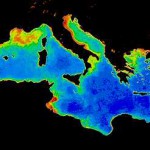
For many years, the Japanese were accused of exploiting the ‘scientific whaling’ loophole at the International Whaling Commission (IWC) for the purposes of commercial harvest to satisfy a seemingly insatiable appetite for seafood. But, until now, there was little evidence to support the claim.
Dr. Nick Gales, head of the Australian scientific delegation to IWC says a scientific review of 43 research papers produced in Japan over 18 years revealed “bizarre and strange experiments with sheep and pigs and eggs” such as efforts to inject minke whale sperm into cows eggs to produce test-tube whale babies.
Australia recently argued for the closure of the “scientific research” loophole at an IWC meeting in London. Environment Minister Peter Garrett said the review shows Japan’s real motive for its whaling is commercial.
“I challenge anyone to look at this sort of research and say it’s necessary, to say it requires killing more than 7,000 whales,” he said.
Chile also wants to present a new initiative to combat the practice. Chilean Senato Guido Girardi compared the whaling Japanese research to Nazi human experiments.
Uh-oh, Chile. No more Plasma TVs for you!
Japan, next time, try hippos.






I don’t have the actual figures on hand, but my guess is that the Japanese do about 43 peer-reviewed papers per year on bluefin and bigeye tuna alone, yet this took 18 years for only 43 papers with all of the whale species they’re harvesting? The link didn’t have the actual cite, so I couldn’t check, but I wonder whether that’s all that was actually published on those specimens, or whether it just focused on the “wierd” research that would get media attention. If those 43 papers are indeed all that was done, then something’s definitely amiss with the Japanese whale research program, and I don’t just mean slow reviewers and editors.
Check this out: isopod preserved in amber.
As was pointed out in the Slashdot discussion when the allegation made it there, the reporting of “efforts to inject minke whale sperm into cows eggs to produce test-tube whale babies” almost certainly involved a misunderstanding of the fact that adult female whales are also called “cows.” It’s likely that no cows of the mooing terrestrial bovine type were involved.
That would suggest deliberate distortion on the part of the Australian scientific delegation, because Dr. Nick Giles was interviewed for the source article.
Sorry, Dr. Gales, not Giles.
Japan, next time, try hippos.
Jesus Christ Peter, they’ll have to retrofit their exploding harpoons for African safaris and once they get the hippo eggs it will take at least another 18 years of careful research to study all the prezygotic and postzygotic barriers to whippo and hippale development. If they succeed the taste test comparisons will take decades more.
almost certainly involved a misunderstanding of the fact that adult female whales are also called “cows.” It’s likely that no cows of the mooing terrestrial bovine type were involved.
Does the Japanese word for “female whale” actually translate as “moo-cow”? Because I have my doubts there.
There may be a translation fault, but there is almost certainly a lack of rigor if the paper was that ambiguous.
I should follow up on this for more detail, since y’all are interested, but note the “sheep and pigs eggs” as well as cow eggs. I’m perhaps a little less suspicious, but I’ll seek out more info.
Graculus: I’m suggesting a misunderstanding by English-speaking reporters of material that was either written in English or correctly translated to English. Not a translation issue, but someone who simply doesn’t know what “cow” means. However, even if it really did mean moo-cows, this Slashdot comment suggests that there could be legitimate science in that too:
http://science.slashdot.org/comments.pl?sid=486462&cid=22742140
Matthew, DSN obtained a list of the papers reviewed by the Australian delegation. The paper below appears to be the one to which Dr. Gales refers. This should help to settle some of the confusion about ‘what is a cow’ in this context.
Wei, H., and Fukui, Y. 2000. Fertilizability of ovine, bovine or minke whale (Balaenoptera acutorostrata) spermatozoa intracytoplasmically injected into bovine oocytes. Zygote 8(3): 267-274.
That’s interesting. From the cited article it’s clear that they *do* mean cows as in terrestrial bovines… but that the claimed objective of the study wasn’t cattle/whale hybrids. The claimed objective seems instead to have been to investigate a type of fertility test where you combine a sample of sperm with eggs from another species and see how far they get, in order to evaluate that batch of sperm’s viability compared to other batches from the same species (because maybe eggs from the original species are in too short supply to waste on a bad batch of sperm; so you test with cheaper eggs). The question considered in the paper seems to be “how well does that approach work?”
Legitimate science or not, you’d think they could use somewhat cheaper sperm than whale sperm for such an experiment. If they were just trying to find out if it’s a good method for determining the viability of sperm, why not try it out with, say, bovine sperm and sheep eggs? Why would whaling be needed for that? Seems to me that the genuine research being done is an opportunistic attempt to get some science out of a commercial whaling program, rather than an opportunistic attempt to make some money selling surplus meat from a scientific whaling program.
It almost sounds like a posteriori hypothesis, or an afterthought. “hmm.. what can we do with these leftovers.”
FishGuyDave, from the list, I count 85 papers produced by JARPA over 18 years, half peer-reviewed and half IWC reports, thus the number 43 (I’m guessing). So, you may be right that overall productivity is low, fwiw. Most of the business is minke whales.